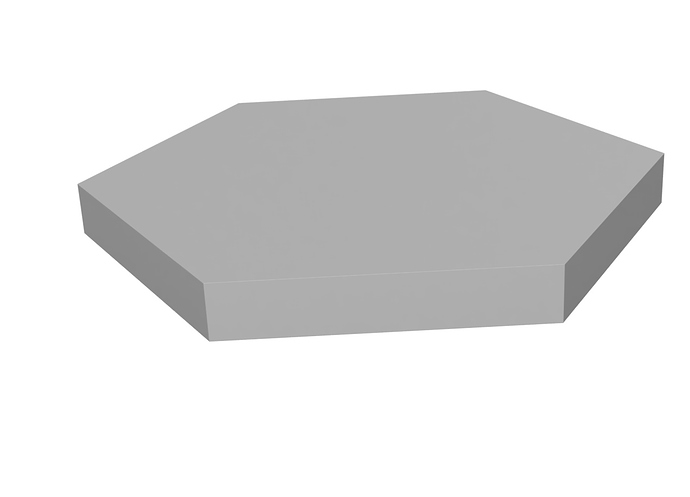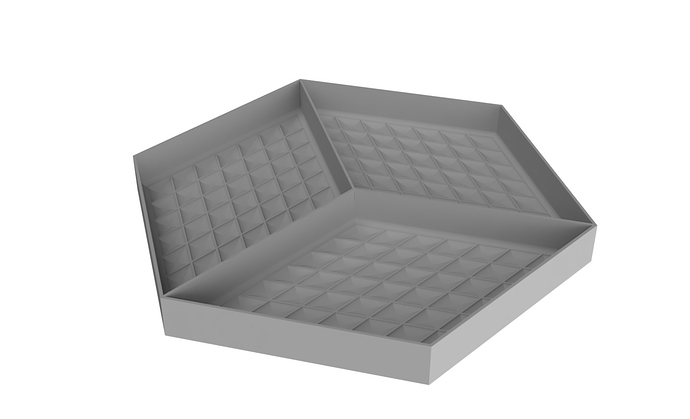Difference between revisions of "Hexagon Pontoon"
Thebastidge (talk | contribs) m (→Images) |
Thebastidge (talk | contribs) (→Cost estimate based on specifications:) |
||
| (One intermediate revision by the same user not shown) | |||
| Line 5: | Line 5: | ||
==Cost estimate based on specifications:== | ==Cost estimate based on specifications:== | ||
| − | area = 176 m^2 | + | *area = 176 m^2 |
| − | displacement = area × 1.5m = 264 m^3 | + | *displacement = area × 1.5m = 264 m^3 |
| − | density = 2.5 t/m^3 | + | *density = 2.5 t/m^3 |
| − | volume = 37.93 m^3 | + | *volume = 37.93 m^3 |
| − | mass = volume × density = 94.825 metric tons | + | *mass = volume × density = 94.825 metric tons |
| − | geopolymer = 55.45USD/T | + | *geopolymer = 55.45USD/T |
| − | basalt_rebar = $600USD/T | + | *basalt_rebar = $600USD/T |
| − | labour = 30USD/h × 40h = 1,200.00 USD | + | *labour = 30USD/h × 40h = 1,200.00 USD |
| − | total = geopolymer × (mass-1T) + basalt_rebar × 1T + labour = $7,002.60 | + | *total = geopolymer × (mass-1T) + basalt_rebar × 1T + labour = $7,002.60 |
| − | total/area = 39.79 USD/m^2 | + | *total/area = 39.79 USD/m^2 |
| + | |||
| + | Here is a link to a tool for calculating hexagon dimensions for purposes of comparing scale: [https://rechneronline.de/pi/hexagon.php Hexagon Calculator] | ||
==Production Method== | ==Production Method== | ||
Latest revision as of 15:31, 29 August 2017
Jake Rosoman's Concept:
Cost estimate based on specifications:
- area = 176 m^2
- displacement = area × 1.5m = 264 m^3
- density = 2.5 t/m^3
- volume = 37.93 m^3
- mass = volume × density = 94.825 metric tons
- geopolymer = 55.45USD/T
- basalt_rebar = $600USD/T
- labour = 30USD/h × 40h = 1,200.00 USD
- total = geopolymer × (mass-1T) + basalt_rebar × 1T + labour = $7,002.60
- total/area = 39.79 USD/m^2
Here is a link to a tool for calculating hexagon dimensions for purposes of comparing scale: Hexagon Calculator
Production Method
Production would be done using permanent molds which would be made from a combination of steel and fibreglass. These would be pretty tricky to make and would likely cost around $30k. Curing would be best done in an oven made from sandwich panel with an electric heater. This would cost about another $20k to make. The first few would be made on land near the ocean then craned into the water at a cost of about $1k per pontoon. From then on you could use these pontoons to build a floating drydock where you can continue building pontoons without the need for a crane.
Design
The open bottom enables waves to flow freely underneath the pontoon. It is divided into 3 segments so as to stay the right way up when on its own. But the dividers won’t be necessary when the pontoon is connected to other pontoons. So they should have removable shutters installed so that air can flow freely between the segments which will make the pontoon even more stable while a wave rolls underneath.
The open bottom also reduces the cost by quite a bit since it means it’s only one piece.
And by pumping air in and out from the underside of the pontoon you can adjust its draft. The maximum load the pontoon can carry is 169tons. And the minimum draft when unloaded is 500mm. And since the sides extend down 1300mm this means the biggest waves it can handle are 800mm. Or about the size of the wake of another boat. By making the sides taller this design could be made to handle bigger waves. It probably can’t go any further than 5m though so it won’t be suitable for unprotected waters.
Use Case
It’s intended for use in protected waters near existing cities. Owners would use the pontoons as a substitute for land. They would assemble a few of them together to form the equivalent of a suburban section and build a normal house directly on top of the pontoon. The deck of the pontoon would act as the foundation and floor of the house which would reduce the cost of the house by about 20%. The main attraction being good location at a much lower price than they would have to pay for normal land.
The producer of these pontoons would take responsibility of managing the community that develops. And once it’s able to look after it’s own citizens independent of the nation whose territory it occupies it will be in a position to bargain for a lower tax rate for it’s citizens using the threat of moving all further development to another country. And someone who is good at that sort of thing could probably bargain a special economic zone out of it, which gets you most of the benefits that international waters offers IMO.
Images
Most recent images will be hosted at this link.

